A lathe machine is a versatile and necessary tool in manufacturing and machining operations. During operation, a workpiece is rotated around its axis while being shaped, and material is removed using a cutting tool. The cutting tool can be moved across the workpiece to produce various shapes and profiles. Lathe machines come in various types and sizes, each created for a particular function, and they are essential in the production of parts and components used in many different industries.
● Precision Manufacturing: Lathe machines are widely used in precision manufacturing industries such as aerospace, automotive, and medical equipment production. They allow for the creation of intricate and accurately dimensioned components critical for these industries' performance and safety requirements.
● Metalworking: Lathe machines are indispensable in metalworking industries. They are used for turning, facing, threading, and grooving operations on metal workpieces. These processes are crucial in creating shafts, bolts, nuts, and other components.
● Woodworking: Wood lathes shape and carve wooden objects like furniture legs, bowls, and decorative items. They offer woodworkers greater control and precision in creating intricate designs.
● Prototyping and Small-Batch Production: Lathe machines are commonly used in prototyping and small-batch production, enabling engineers and manufacturers to test designs and produce limited parts before mass production.
● Lathe machines are crucial for repair and maintenance, reshaping and resizing damaged components, and extending equipment lifespan.
● Lathe machines transform various materials into creative ornamental works, enabling unique patterns and designs in art and crafts.
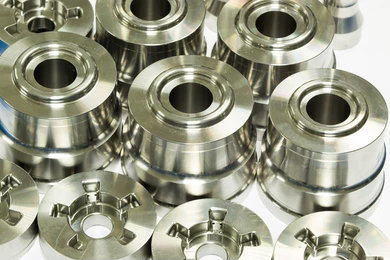
Turning workpieces on a lathe dates back to ancient times, with early lathes in Egypt and Mesopotamia. The Industrial Revolution introduced steam power and electric motors, revolutionizing the manufacturing industry. Turret lathes and automatic lathes improved efficiency, enabling multiple tooling operations and material handling, leading to mass production in the watchmaking and automotive manufacturing industries.
CNC technology has revolutionized lathe machines, offering precision, automation, and reduced human intervention. This evolution has significantly impacted industrial progress, shaping manufacturing and engineering sectors. Lathe technology's versatility and continuous improvements have made it a fundamental tool in the industry.
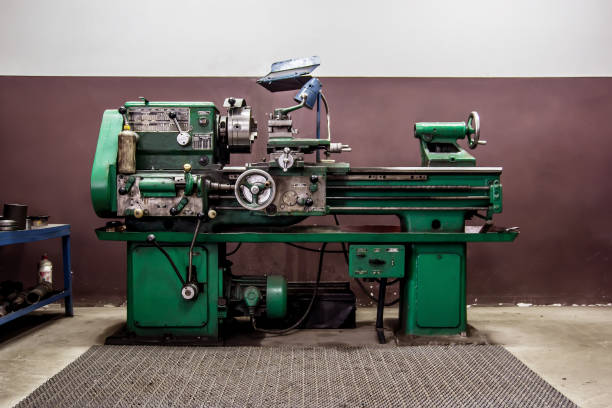
Features and characteristics:
● Compact Size: Bench lathes are small and lightweight, designed to be placed on a workbench or a sturdy stand.
● Portable: Their smaller size and weight make them easy to move and relocate as needed.
● Simple Design: Bench lathes are straightforward, making them user-friendly and suitable for beginners.
● Low Power Requirements: They generally require lower power than larger lathes due to their smaller work capacities.
Typical applications:
● Light-duty Turning: Bench lathes are used for light turning and facing operations on small workpieces.
● Model Making: Hobbyists and model makers often use them to craft miniature components and models.
● Education and Training: Bench lathes are commonly found in educational institutions for training students in basic lathe operations.
Pros
● Affordable: Bench lathes are more budget-friendly than larger, more sophisticated ones.
● Space-saving: Their compact size makes them suitable for workshops with limited space.
● Beginner-friendly: They are ideal for those new to machining due to their simple setup and operation.
Cons
● Limited Capacity: Bench lathes are unsuitable for machining larger or longer workpieces.
● Less Versatility: They may need more advanced features found in larger lathes, limiting their range of applications.
● Lower Precision: Their smaller size and lower rigidity may reduce accuracy for specific tasks.

Features and characteristics:
● Versatility: Engine lathes are highly versatile and can perform various machining operations.
● Sturdy Construction: They are built with robust materials for moderate to heavy-duty machining tasks.
● Long Bed Length: Engine lathes have longer beds, allowing them to handle larger workpieces with extended lengths.
● Thread Cutting Capabilities: They can cut different types of threads using various threading techniques.
Common applications:
● Turning: Engine lathes depend on cylindrical, conical, and spherical shapes on various materials.
● Facing: They can face off the end of a workpiece to create a smooth and flat surface.
● Drilling: Engine lathes can perform drilling operations using a tailstock or other tool-holding attachments.
Advantages:
● Wide Range of Applications: Engine lathes can handle diverse machining tasks, making them suitable for various industries.
● Reliability: They are known for their durability and reliability, requiring minimal maintenance when correctly cared for.
● Flexibility: Engine lathes can accommodate different workpieces, making them adaptable to changing production needs.
Limitations:
● Size and Weight: Engine lathes may be heavy and take up considerable space, which can be a limitation for smaller workshops.
● Initial Cost: Engine lathes can be more expensive than bench lathes, especially for more extensive and advanced models.
● Manual Operation: While versatile, they require manual operation, which may limit production speed and efficiency in high-volume manufacturing.
Key features:
● Precision and Accuracy: Toolroom lathes are built with tight tolerances and high-quality components, ensuring precise machining.
● Rigidity: They have a sturdy construction and minimized vibrations, contributing to enhanced cutting stability and accuracy.
● Versatility: Toolroom lathes can handle various materials and complex machining operations.
● Tailstock: They are equipped with a tailstock for supporting long workpieces during machining.
● Tool Post: Toolroom lathes often feature a quick-change tool post system, allowing easy and rapid tool changes.
Applications in tool and die making:
● Toolroom lathes are extensively used in manufacturing tools, dies, molds, and other high-precision components in device and die-making.
● They are suitable for creating intricate features and contours required to produce specialized tooling.
Pros
● High Precision: Toolroom lathes excel in producing precise and accurate parts.
● Versatility: They can handle a variety of materials and complex machining tasks.
● Quality Finish: Toolroom lathes are capable of achieving superior surface finishes.
Cons
● Cost: Toolroom lathes are generally more expensive than standard engine lathes due to their enhanced precision and features.
● Complexity: Their increased precision and performance may require skilled operators and maintenance personnel.
● Production Speed: Toolroom lathes may be slower than other specialized lathes in high-volume production.
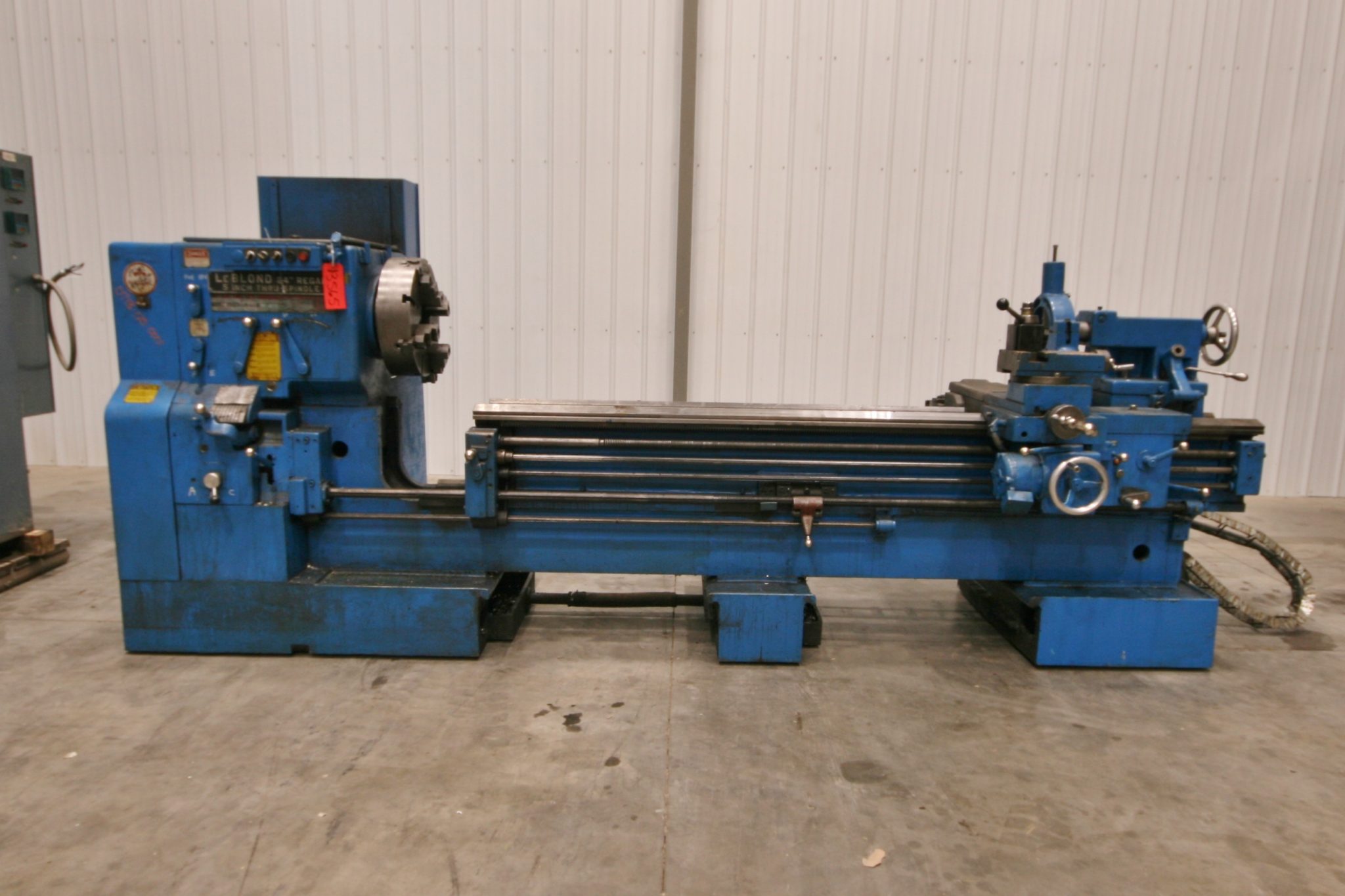
Structure and design:
● Gap bed lathes have a removable section (gap) in the bed, which allows the lathe's spindle to rotate larger-diameter workpieces.
● The gap is typically covered with a removable bridge, and when the bridge is removed, the lathe's swing capacity is significantly increased.
Uses and benefits:
● Gap bed lathes are utilized in industries where varying workpiece sizes are encountered.
● They provide flexibility in machining short and long workpieces without requiring special modifications or tool changes.
Limitations:
● The gap may reduce overall rigidity compared to non-gap bed lathes, affecting the lathe's performance during heavy-duty machining.
● The gap can also limit the lathe's accuracy when machining exact components.
Robust construction:
● Heavy-duty lathes are designed with a robust and rigid structure to handle large, heavy workpieces.
● They are often made from high-quality materials to withstand the high cutting forces and vibrations generated during heavy machining.
Industrial applications:
● Heavy-duty lathes are commonly used in industries that require machining large and heavy components, such as those in the energy sector, shipbuilding, and aerospace.
● They are utilized for turning large shafts, cylinders, and other heavy-duty machinery parts.
Advantages
● High Cutting Power: Heavy-duty lathes can easily handle heavy cuts and roughing operations.
● Durability: Their robust construction ensures a long service life and reliable performance under demanding conditions.
● Versatility: Heavy-duty lathes can handle various materials and machining operations despite their size.
Considerations
● Cost: Heavy-duty lathes are substantial investments due to their size and specialized construction.
● Space Requirement: Their large footprint may require significant floor space in the workshop.
● Power Consumption: Heavy-duty lathes require substantial power, leading to higher energy consumption.
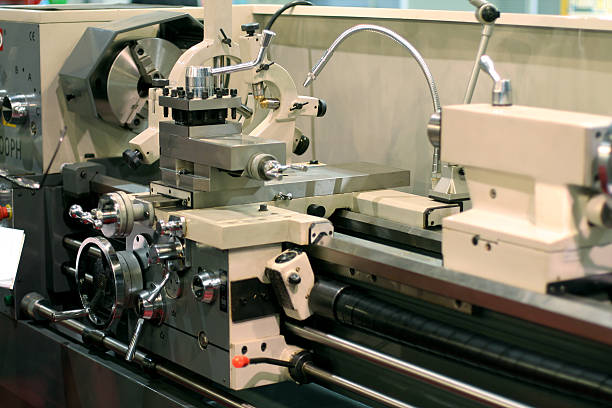
Operating mechanism:
● Mechanical lathes use power transmission systems to drive the spindle and perform various machining operations.
● The power from the main motor is transmitted to the spindle and other components through belts, gears, and pulleys.
● Operators manually control the movement of the cutting tools and the speed of the spindle using handwheels or levers.
Suitable applications:
● Mechanical lathes suit light to moderate turning and facing operations on small to medium-sized workpieces.
● They are commonly used in workshops, educational institutions, and hobbyist settings for basic machining tasks.
Maintenance requirements:
● Mechanical lathes have relatively simple designs, making them easy to maintain and repair.
● Regular lubrication of moving parts and periodic wear and tear checks are essential for smooth operation.
● Belts and other transmission components may need occasional replacement to maintain optimal performance.
Power transmission through hydraulics:
● Hydraulic lathes use hydraulic power to control the movement of the cutting tools and various machine functions.
● Hydraulic cylinders and valves regulate the feed rate, cutting pressure, and other machining parameters.
Specific uses in machining:
● Hydraulic lathes are particularly suitable for heavy-duty machining operations where constant and precise pressure is required during cutting.
● They are commonly used for facing, turning, and grooving operations on large, robust workpieces.
Comparisons with other types:
● Compared to mechanical lathes, hydraulic lathes offer smoother and more consistent cutting forces, leading to improved surface finishes and accuracy.
● Hydraulic lathes may have better control over feed rates and can handle heavier cuts, making them preferable for machining rigid materials.
● However, hydraulic lathes can be more complex and require additional maintenance due to their hydraulic components.
Electric motor-driven operations:
● Electric lathes utilize motors for smooth, continuous workpiece rotation.
● Electronic controls control spindle speed for variable machining.
Advantages of modern manufacturing:
● Electric lathes are more effective and accurate than traditional mechanical lathes.
● By making automation and integration with other computer-controlled systems more straightforward, they increase efficiency and reduce human error.
● Electric lathes enhance modern manufacturing by speeding production and improving precision.
Energy efficiency considerations:
● Electric lathes are generally more energy-efficient than hydraulic or mechanical lathes, as they only consume power when the motor is running.
● Controlling spindle speeds electronically also helps optimize energy usage during machining processes.
Automation and precision:
● CNC lathes are automated machines with computer numerical control systems to control machining operations precisely.
● They follow pre-programmed instructions and codes to execute complex machining tasks with high accuracy and repeatability.
Industries utilizing CNC lathes:
● CNC lathes are extensively used in various industries, including aerospace, automotive, electronics, medical, and general manufacturing.
● They are precious in mass production scenarios where consistent quality and efficiency are essential.
Programming and operation:
● Programming a CNC lathe involves writing or generating a computer program that contains instructions for the machine to execute specific machining tasks.
● CNC lathes require skilled operators to read and interpret engineering drawings and create the necessary CNC programs for the desired components.
High-speed capabilities:
● Speed lathes handle high rotational speeds.
● The high-speed capability enables rapid workpiece machining, achieving fine finishes.
Specialized applications:
● Speed lathes are primarily used for tasks that require high-speed rotation, such as polishing, grinding, and metal spinning.
● They are precious for operations where achieving smooth surfaces or precise finishes is critical.
Limitations and safety measures:
● Speed lathes are unsuitable for heavy-duty machining due to their small size and limited power.
● Safety measures are essential when working with high-speed lathes, including wearing appropriate personal protective equipment (PPE) and securely fastening workpieces to prevent accidents.
● Operators should be cautious of the potential hazards associated with the rapid rotational speed of the workpiece and cutting tools.
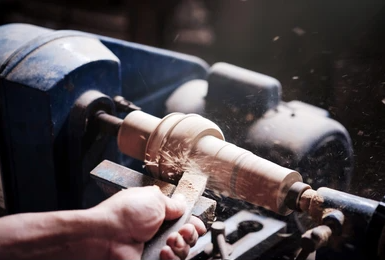
Designed for woodworking:
● Wood lathes are specialized machines designed explicitly for shaping and crafting wooden workpieces.
● They are equipped with features that cater to the unique characteristics of working with wood.
Artistic and functional applications:
● Wood lathes allow woodworkers to create functional and artistic wooden objects, such as furniture legs, bowls, vases, and sculptures.
● Woodturning on a lathe enables woodworkers to achieve intricate designs and detailed patterns.
Comparisons with metalworking lathes:
● Wood lathes differ from metalworking lathes, including speed control, tool types, and techniques.
● Wood lathes often have variable speed controls to accommodate different types of wood and achieve optimal cutting conditions.
● Woodturning tools have specific shapes suitable for cutting wood fibers, while metalworking lathes use cutting tools designed for metals.
Turret head and multiple tool stations:
● Turret lathes have a turret head holding multiple cutting tools simultaneously.
● The turret can index, allowing quick tool changes and enabling the lathe to perform multiple operations without manual intervention.
Mass production advantages:
● Turret lathes are well-suited for mass production of identical parts.
● The ability to switch between various tools rapidly reduces downtime and increases production efficiency.
Limitations and setup complexities:
● Turret lathes may have limitations in terms of part size and complexity due to the size and capacity of the turret.
● Setting up the tooling and programming the turret can be complex and time-consuming, especially for intricate components.
Automatic material feeding and tool changing:
● Automatic lathes are highly automated machines that feed the raw material and change tools as needed.
● The material feeding and tool-changing mechanisms reduce the need for constant operator intervention.
High-volume production uses:
● Automatic lathes are designed for high-volume production of small, repetitive components.
● Industries like automotive, electronics and fastener manufacturing commonly employ automatic lathes for mass production.
Maintenance considerations:
● Automatic lathes require regular maintenance to ensure the smooth operation of the automated mechanisms.
● Proper lubrication and periodic inspections prevent breakdowns and maintain production efficiency.
The worlds of production and machining cannot function without lathe machines. They occur in many different varieties, each with particular characteristics and uses that meet the demands of diverse industries and production needs.
Bench lathes, engine lathes, toolroom lathes, specialized lathes, turbine lathes, and multi-spindle lathes are versatile tools used in various industries. Engine lathes handle multiple tasks, while toolroom lathes offer precision and accuracy. Specialized lathes cater to specific materials and artistic applications.
Lathe technology advances, enhancing efficiency and control in machining processes. CNC lathes offer unparalleled precision, automation, and repeatability. Lathe machines are crucial in modern manufacturing, creating intricate parts and artistic pieces in various industries.
Although each lathe type has advantages and disadvantages, their extensive use in various sectors demonstrates their adaptability and significance in the modern production environment. Lathe machines will likely influence the production and innovation world as technology develops.